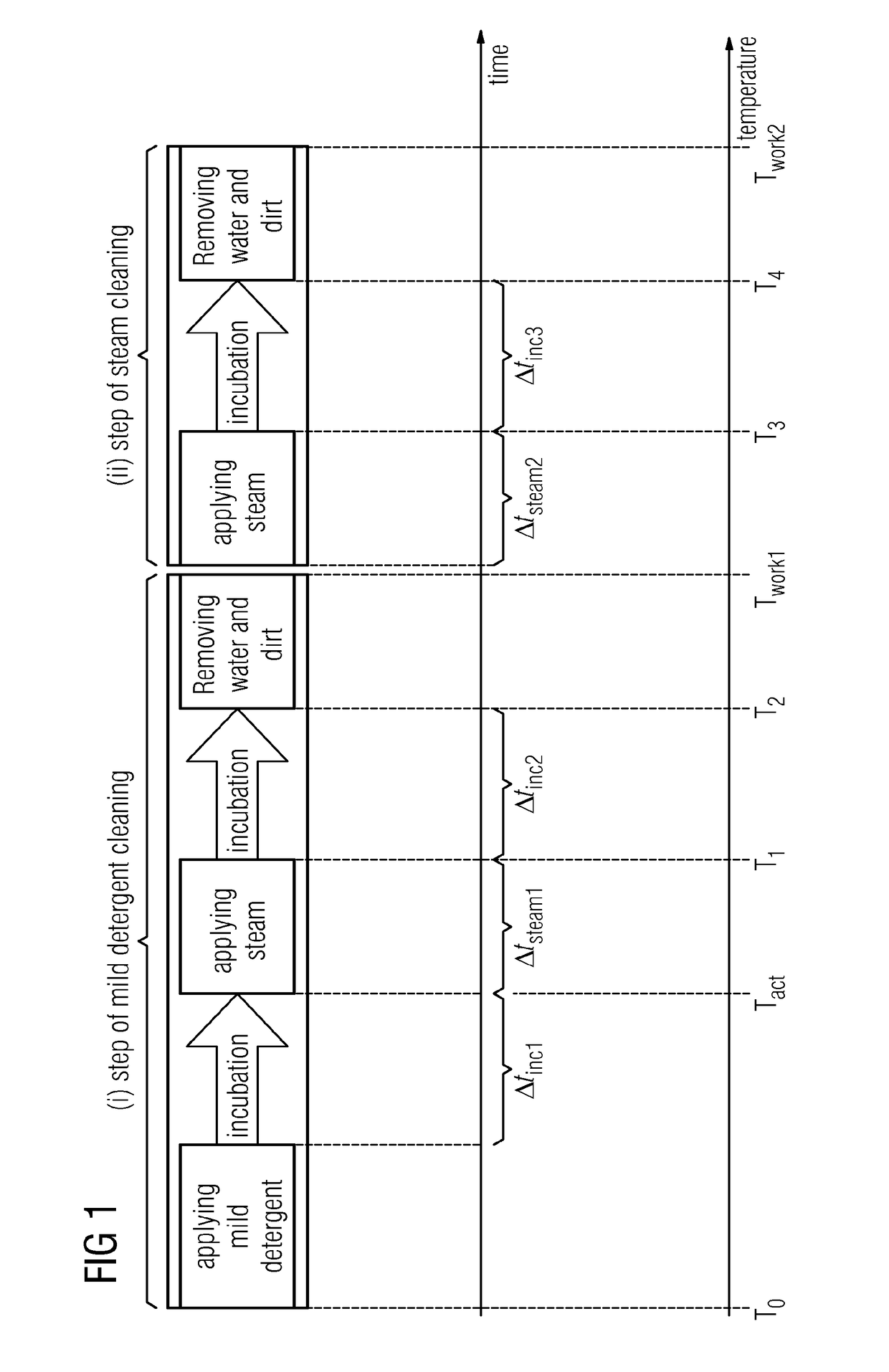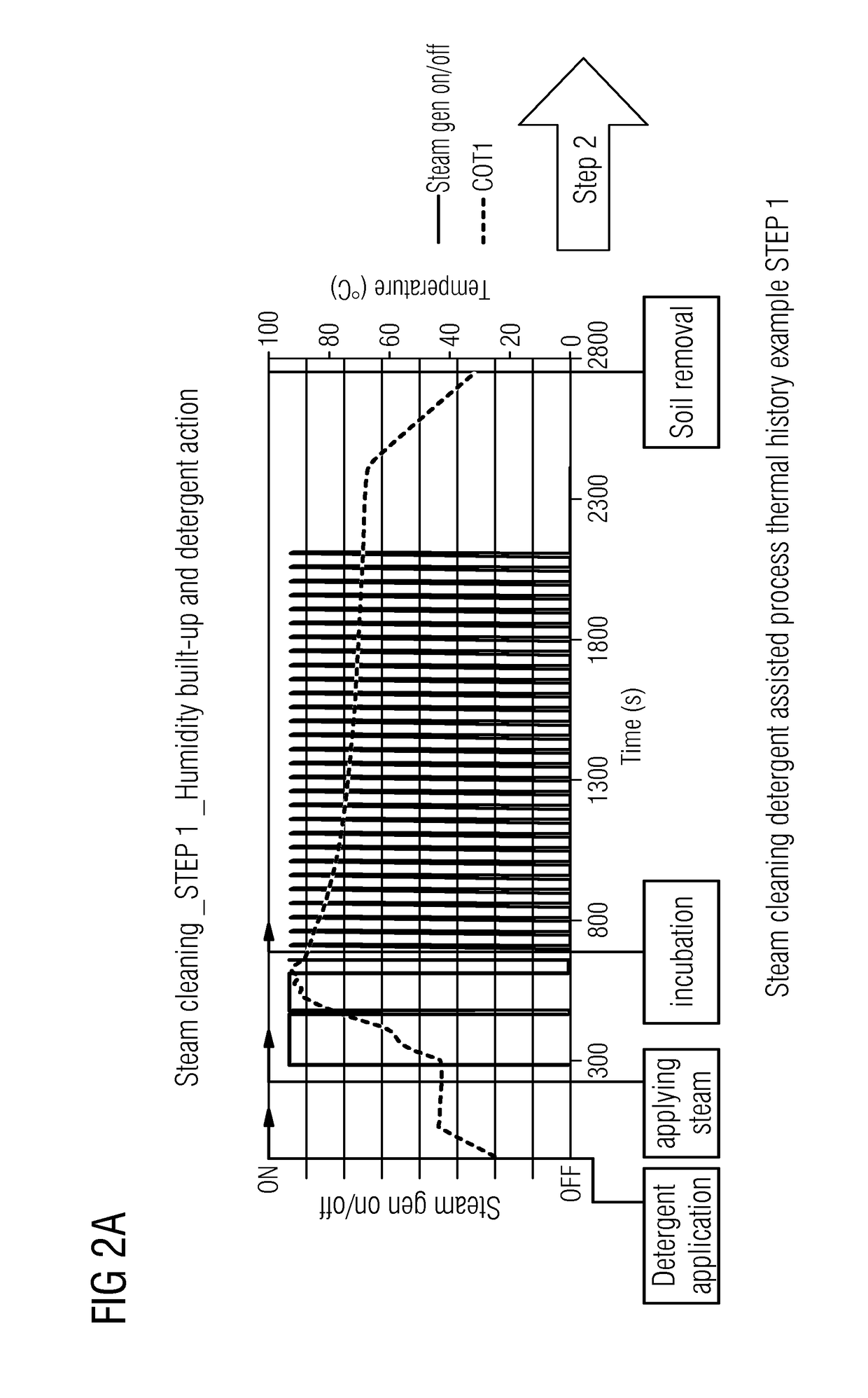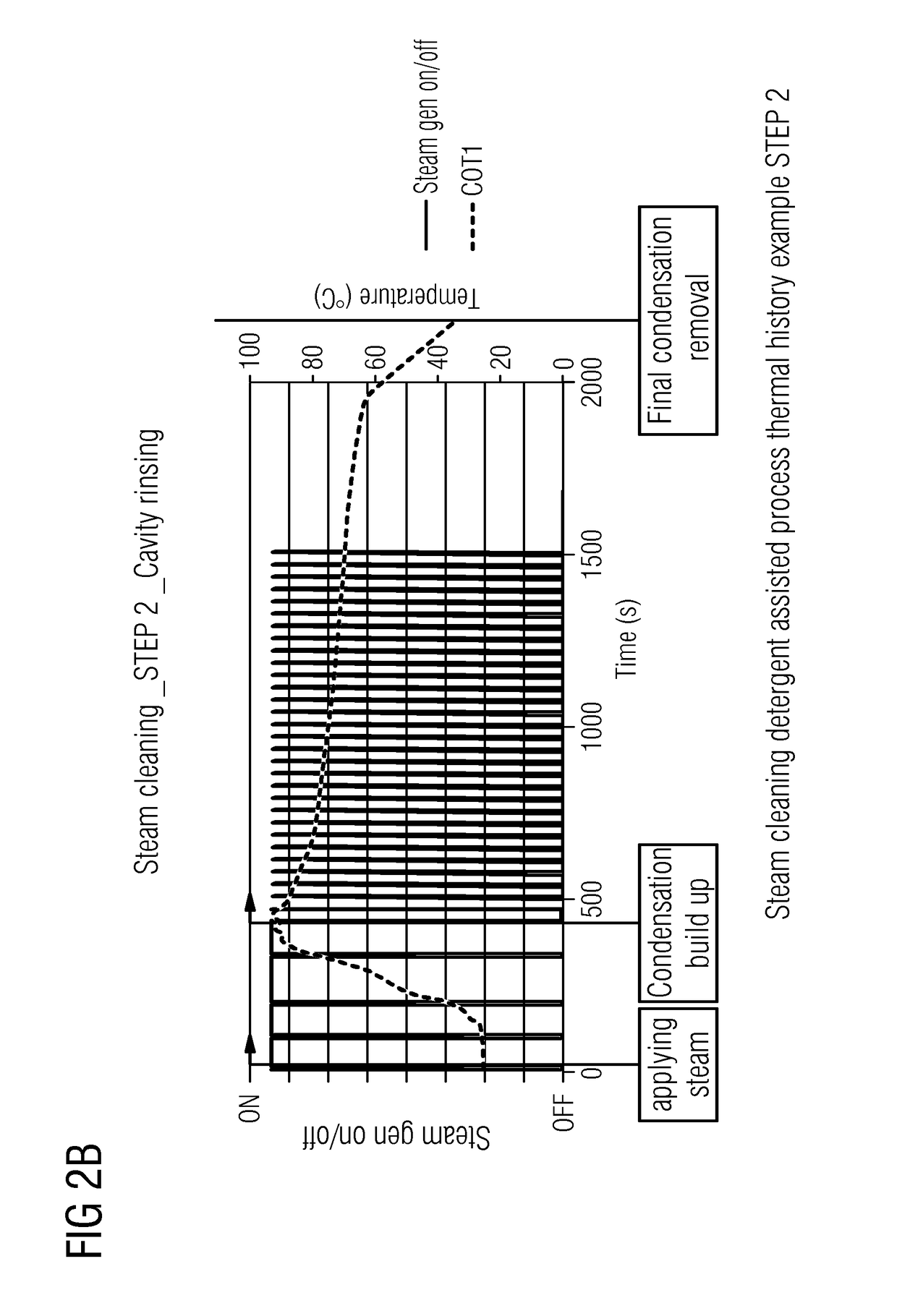Steam oven cleaning method
a cleaning method and oven technology, applied in self-cleaning stoves/ranges, domestic heating, lighting and heating apparatus, etc., can solve the problems of pyrolysis taking a long process time, unpleasant use of detergents, and affecting the cleaning effect, so as to improve the cleaning method
- Summary
- Abstract
- Description
- Claims
- Application Information
AI Technical Summary
Benefits of technology
Problems solved by technology
Method used
Image
Examples
Embodiment Construction
[0105]FIG. 1 schematically shows the sequence of steps of the inventive method.
[0106]The present invention relates to an automated oven cleaning process, particularly for a food cooking steam oven, adapted to cook foods by introducing steam into the cooking cavity, where the action of a detergent is integrated in the process itself to enhance effectiveness against heavy soiling.
[0107]Therefore, at first in a step (i.1) a mild detergent is applied to the oven cavity as part of a step (i) of mild detergent cleaning. Said step (i) of mild detergent cleaning, further comprises subsequent to the step (i.1) of applying mild detergent to the oven cavity at a predetermined cavity starting temperature (T0), a step of incubating the oven cavity for a predetermined incubation period of time (Δtinc1). Afterwards, in a step (i.2) steam generated by the steam generation device and thereby heat and moisture is applied to the oven cavity for a steam period of time (Δtsteam1) until the oven cavity r...
PUM
 Login to View More
Login to View More Abstract
Description
Claims
Application Information
 Login to View More
Login to View More - R&D
- Intellectual Property
- Life Sciences
- Materials
- Tech Scout
- Unparalleled Data Quality
- Higher Quality Content
- 60% Fewer Hallucinations
Browse by: Latest US Patents, China's latest patents, Technical Efficacy Thesaurus, Application Domain, Technology Topic, Popular Technical Reports.
© 2025 PatSnap. All rights reserved.Legal|Privacy policy|Modern Slavery Act Transparency Statement|Sitemap|About US| Contact US: help@patsnap.com



